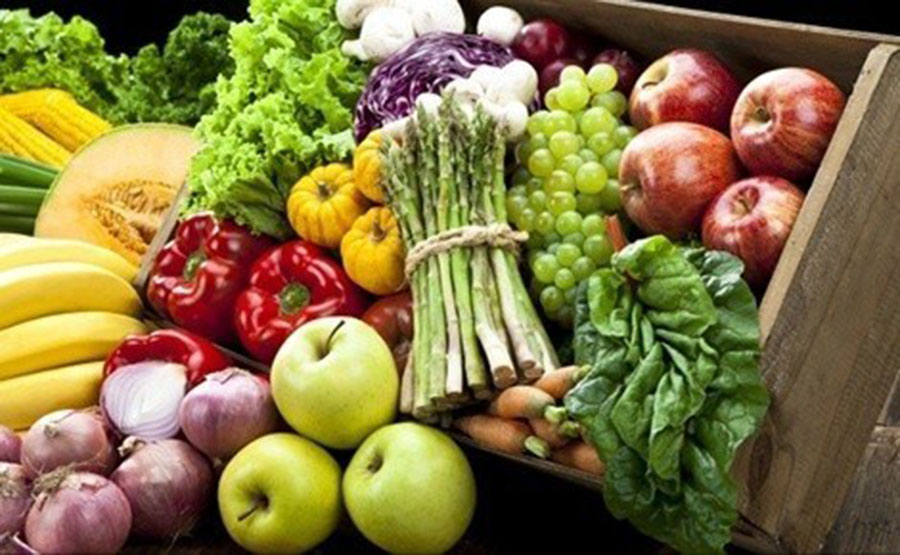A new study led by CDC researchers found on Thursday that just 1 out of 10 US citizens has a well-balanced diet where fruits and veggies are an essential part of it. The majority of people who embraced eating these two foods were women and Hispanic-Americans.
The researchers took data from people of all ages, sex, race, ethnicity, and social status.
They found that the total of citizens who consume at least one and a half to two cups of fruits per day is just 12 percent. Moreover, the percentage of Americans who eat two to three cups of vegetables daily — which is the amount of food stated by federal guidelines and usually recommended by experts — is just 9 percent.
These health officials recommendations are, as they consider, to help people avoid several diseases, such as heart disease, type 2 diabetes, some cancers, and obesity.

Some Americans reported low rates of vegetable and fruit consumption. Within this group, many said they ate none of the foods.
Those who seem to eat fewer vegetables and fruits among Americans were the men, young adults and people living with low-incomes.
People should start eating more vegetables and fruits
The study showed that 15.1 percent of all the US women accepted that the two groups of foods are usually a part of their daily diets, but just 9.2 percent of men said the same. Plus, 11.4 percent of Americans with high incomes said they eat enough vegetables and fruits per day, compared to the 7 percent of poor people who do the same.
“The study confirms years of data demonstrating that Americans do not eat their veggies,” professor of nutrition and food studies at New York University, Marion Nestle, told the Guardian. “Assuming this result is close to reality, it suggests the need for taking much stronger action to make it easier and cheaper to eat fruits and vegetables.”
Better than eating no fruits or vegetables at all, the Centers for Disease Control and Prevention (CDC) recommends to cut the foods at once and add them to the central plate. Additionally, people can also freeze the rest that they didn’t use, or buy frozen veggies.

Experts consider that this study is excellent to remember people how vital it is to have a healthy diet integrated with fruits and vegetables. However, Sarah Reinhardt — a nutritionist and food systems analyst at the Union of Concerned Scientists (UCS) — considered that there’s still a “lot more work to do” to certify that this result reaches “every corner of the country.”
“The food industry is not exactly working with public health on this, there’s a multimillion-dollar industry working to get people to eat [processed foods],” Reinhardt said.
These results come from the CDC’s 2015 Behavioral Risk Factor Surveillance System, which shows the behavior and foods consumed by the Americans.
To gather the data, the researchers called several people across the states to ask them how often they ate beans, dark greens, orange vegetables, “other” vegetables, whole fruit and fruit juice.
CDC officials perform this sort of study every two years. As usual, the researchers gathered data from all the fifty states along with Washington D.C.
The best rate of people consuming veggies and fruits is still pretty low
According to the CDC’s finding, just 2.2 percent of people ages 18 to 30 that live in South Dakota eat the enough amount of vegetables per day. Similarly, the study showed that from the total of West-Virginians — people who usually top lists of the least healthy and most impoverished — just 5.8 eat their veggies daily.
Just a 9.6 percent of New Yorkers eat the recommended amount of vegetables, while 12 percent of people living in Alaska do the same. This last state presented the highest percentage of them all. However, it’s still pretty low compared to what it should be.

When talking about fruits, West Virginia had the lowest percentage of all the states whit 7.3 percent. On the other hand, Washington reported 15.5 percent.
“This report highlights that very few Americans eat the recommended amount of fruits and vegetables every day, putting them at risk for chronic diseases like diabetes and heart disease,” said the lead author of the study Seung Hee Lee Kwan, Ph.D., of CDC’s Division of Nutrition, Physical Activity and Obesity. “As a result, we’re missing out on the essential vitamins, minerals, and fiber that fruits and vegetables provide.”
It would be challenging to increase these numbers — especially after knowing that just 2 percent of US farmland is entirely devoted to producing fruits and vegetables, as the UCS reported. Reinhardt said that the farmers would need to double their efforts to at least cover the total amount of consumers in the entire country.
Source: Centers for Disease Control and Prevention
